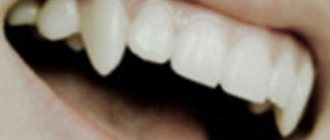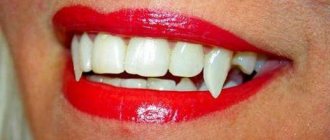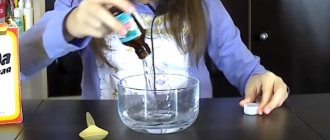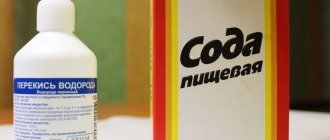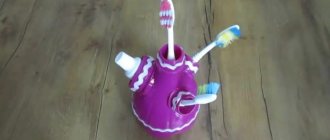Making a plaster hand with your own hands is available to everyone. A casting made according to all the rules and in compliance with the proportions when mixing the working solution will turn out to be very realistic.
The appearance of the finished product and its strength characteristics will depend on the quality of the gypsum. To achieve maximum similarity, a high-quality form is necessary. Special materials are used for its manufacture.
Idea
For lovers, a plaster cast of a pair of hands clasped together can serve as a gift for a significant date. Often this composition is ordered by newlyweds on their wedding day.
Parents order casts of children's hands and feet as souvenirs in addition to photographs and videos of their children. Such a souvenir, decorated in an elegant frame, can be presented to family and friends as a memory of a memorable date: a first or anniversary birthday, baptism, a child’s first independent step, etc.
You can create a whole collection of such casts, made during different periods of active growth of the child. Later, holding them in their palms, children may remember the happy moments of their childhood.
An elegant plaster hand, made and decorated with your own hands, can also serve as a detail of an original composition. This decoration, for example, can also be used as a mannequin for storing rings.
Colorful traces
The first thing that comes to mind to immortalize the hands and feet of a child is to dip them in watercolor or gouache and print them on plain paper or cardboard. Yes, this is not the most original method, but it is inexpensive and fast. To preserve this sheet for a long time, you can either laminate it or put it in a beautiful stretcher.
Gypsum
There are many different materials available for mold casting. These are paraffin, wax, concrete, silicone, metals, even chocolate can be poured into food form. Nowadays plastic compositions and resins have become available. They all have their own specific casting features. To answer the question of how to make a plaster hand, you first need to understand what kind of material it is. It is also important to understand the technology of its casting.
Gypsum powder is a natural material. It is white or grayish in color, finely ground, and quickly absorbs moisture when water is added. It is obtained by firing gypsum stone and is distinguished by purpose: for medical purposes, for molding, for plastering work and for the production of slabs.
Gypsum for construction has a coarser grind, medical gypsum is the purest, and molding gypsum sets more slowly. A useful property for sculptures is an increase (up to 1%) of the working composition in volume. This extension makes it possible to fill in a small drawing of a form. When preparing the solution, within a few minutes it begins to harden and completely sets within 20 minutes.
Impression process
Some oral preparation may be required before the procedure. For example, in some situations it is necessary to first prepare the gums from the cervical area. For patients who have no teeth left in their jaw, bone growths (exostoses) are often removed first. Such manipulations require the use of local anesthesia.
After completing the preparation, you can start making your print:
- the oral cavity is thoroughly dried using cotton swabs and an air stream,
- the selected material is taken into a special tray for impressions. The spoon itself can be of different sizes, but usually follows the curve of the dentition. In some cases, this instrument is made individually for the patient,
- a spoon with the substance is brought into the oral cavity, after which the patient squeezes it with his teeth or the doctor presses the material to one of the jaws,
- the resulting impression is washed and placed in a special solution.
After all the steps described above, the print is ready to form a plaster model. Often, the impression in this form is immediately transferred to the dental technician.
Impression process
Features of the technology
Gypsum powder should be stored in a dry place. Wetted or damp material is unsuitable for casting; it does not set. Its characteristics also deteriorate from long-term storage. The gypsum working solution is prepared quickly. Due to prolonged stirring, it “rejuvenates” and sets weaker, which ultimately leads to a loss of strength of the finished product.
If the working solution has hardened before pouring is complete, it is no longer suitable for use. Adding water and stirring it again will not correct the situation. Liquid glue can help slow down the setting of the solution. It (3-4 spoons per bucket of water) is added first and mixed well.
The casting must be dried at temperatures up to 60 degrees. It is not advisable to exceed this limit - the material loses strength and begins to decompose. A do-it-yourself plaster hand is made taking into account all these nuances. To make the finished product stronger, the solution is mixed with lime milk.
Moisture and dampness have a negative effect on gypsum products, so they must be used and stored indoors, especially if they do not have a protective coating.
Purpose
There are a great many composition options for family creativity, there are even options for those with hypersensitive skin. To select the material, you need to determine the purpose of the product. If casts of arms and legs, made with your own hands, will be hidden in a casket or box of memories, it is necessary to choose a lightweight material that would convey only the size of the limbs. In the case where the impression of the child’s limbs will be constantly visible, it must be formed from durable materials that can withstand both decoration and subsequent use in the form of a figurine or frame.
Preparatory operations
Making a plaster hand on your own is possible at home without the use of any special technologies or special equipment. However, in order for the casting process to go smoothly, you need to carefully prepare. Different batches of gypsum (especially building gypsum) may have different setting times.
To find out for sure, it is best to carry out a test batch and pour a small amount of solution into any simple form. This will allow you to accurately calculate the proportions of gypsum and water and determine the time period within which the solution retains casting properties. Ultimately, this will help save material, time and nerves.
At the preparation stage, they determine the container for the mold, and also select a suitable vessel for mixing the gypsum solution. For one-time pouring, you can take disposable dishes. If you plan to continue casting, it is best to purchase rubber plaster for mixing the working solution.
Half of an old children's ball is suitable for these purposes. Dried plaster from the walls is easily peeled off when the rubber is deformed. The skin of the hand that will be immersed in the molding mass can be lubricated with a thin layer of castor oil or Vaseline.
What types of prints are there?
Dental impressions differ in their purpose and the materials used to create them. For example, it is possible to distinguish between anatomical and functional impressions. The first option allows you to obtain an impression of 1-2 teeth for the subsequent production of an artificial crown or bridge. In some cases, this method is used to assess the condition of certain organs of the oral cavity.
Functional impressions are performed if the patient has larger defects in the dentition, including complete edentia (when there are no teeth at all on the jaw). The resulting impression will take into account all the deformations in the mucous membrane and ligaments located in the oral cavity during conversation, chewing food and other movements - that is, in dynamics.
This type of print has its own classification. They are divided into the following subspecies:
- compression - they are performed during restoration of the lower jaw. Such an impression reflects the relief of the base of the future orthopedic system. The data obtained make it possible to ensure a more uniform distribution of the chewing load to inhibit the processes of atrophy in the jaw bone,
- unloading – necessary if you are expecting an intense conversation load. The method provides more complete and detailed information about the condition of the soft tissues of the gums and ultimately allows us to obtain a design that is optimally adapted to a given request,
- combined (universal) - allow you to take into account the smallest nuances of the mucous membrane and predict the load on bone structures under conditions of chewing load1.
What kind of imprint needs to be made in a particular case is decided by the attending specialist. To do this, he first studies the clinical picture and its features, and outlines a rough plan for restoring missing teeth.
Simple clay mold
A trial plaster cast of the hand can be successfully cast into a clay mold. This will not be a full-fledged voluminous copy, but it will provide an opportunity to gain first practical experience. Clay is an affordable material, it can be used repeatedly after unsuccessful attempts, which is just right for beginners.
You need two pieces of board or plywood, 5 cm larger than your palm. Lubricate them and your hand with vegetable oil or Vaseline. This is necessary so that the clay does not stick. Place your hand on the board, press it tightly and begin to apply clay moistened with water and kneaded to a thick dough, pressing it well and compacting it.
The total layer should be at least 5 cm. Its top is leveled flat and covered with another board. The entire structure, together with the hand, is carefully turned over. The bottom board is removed and the palm is carefully released. The form for filling is ready. To obtain ideal castings, plastic molding compounds are used.
Self-hardening plastic product
No less colorful is a cast of children's hands and feet, made with your own hands from self-hardening plastic. The material is more durable than dough or plaster, and can also be adjusted much easier than its predecessors. You can buy such material at any art store. The first step is to deal with the imprint of the limb: on the salt dough, you should carry out the procedure of squeezing out the handle and leave the base to dry. Carrying out an impression on the test will reduce the risk of allergies due to contact between the child’s small hand and the chemical composition of the plastic itself, which is undoubtedly a plus.
When the cast of the baby's hand and foot, made with your own hands, has dried, you can start processing it. The first step will be to coat the impression with vegetable oil - this will help the plastic not stick to the dough. You should not pour a glass of fat onto the cast; it is better to run a wide brush or a cotton pad soaked in the substance over it.
Alginate for impressions
To make a mold for volumetric casting of complex shapes, special compositions are used. One of the most affordable options is alginate mass. Its main purpose is to make impressions in dental practice. But such material is quite suitable for sculptural castings.
Alginate is a raw material from seaweed. Its dry powder, mixed with water in precise proportions, quickly thickens and acquires the properties of a dense jelly. If you place your hand in such a mass before the setting process begins, and then, after achieving optimal density, carefully remove it, a cavity will form in the mold. If you pour a gypsum solution into it, after hardening it forms an exact copy of the hand.
It will not be possible to remove the casting without destroying the mold. The alginate mass is not in a state of plasticity for long; it begins to lose moisture, becomes brittle and collapses from deformation. Therefore, filling with the working composition should be done immediately after removing the hand. In this case, you can expect a high quality cast copy.
Some brands of alginate masses change color as they harden. When kneading, they have one shade, in the initial setting phase (the optimal moment of immersion of the hand) - another, after reaching density (when the limb can be removed) - a third. The process of making a plaster hand using such a molding material is within the capabilities of anyone.
Features of modern functional diagnostics
Before moving on to consider the types and technology of creating dental impressions, it is worth mentioning the features of modern functional diagnostics. For example, when carrying out prosthetics on implants using modern one-stage treatment protocols, advanced 3D modeling and visualization programs are now used, including for developing a prototype of a future prosthesis based on downloaded CT data. Subsequently, this prototype is used by the dental technician to create a wax model of the structure, after which it is placed in the articulator.
“I don’t know if it’s like this everywhere now, but six months ago, when I was getting a prosthesis, they scanned the inside of my mouth with a special sensor. And immediately the doctor showed a picture of the jaws on his monitor, quickly and without unnecessary fuss. Still, time does not stand still, new technologies appear, and dentistry is progressing especially quickly. And by the way, the prosthesis turned out perfect, it fit like a glove the first time, without any fittings…” ElizavetaShindorovich, from correspondence on the 32top.ru forum
Few people know what an articulator is and what it looks like. This is a small laboratory instrument used to evaluate the correctness of occlusal contacts and mandibular mobility. Thanks to it, the finished prosthesis fits perfectly and provides a high level of comfort during operation, since it takes into account the slightest nuances in the dynamics of the jaw apparatus.
Articulator - a device used to assess the correctness of chewing contacts and mobility of the lower jaw
Preparation of the solution
A plaster hand is cast with your own hands in a pre-prepared mold. The mixing container is filled with clean cold water in the required quantity. Dry gypsum powder is evenly poured into it. Ideally, it should form a slide above the surface.
The gypsum begins to intensively absorb water. At this time it needs to be stirred well. This should not be done too intensely, as air bubbles will form. They remain in the solution, fall into the mold and, after it hardens, form shells and cavities. Therefore, you can use a drill with a kneading attachment only at low speeds. It's best to do everything by hand using a spoon or wooden stirrer. The goal is to obtain a homogeneous mass without lumps, reminiscent of sour cream in thickness.
The water/gypsum proportions (approximately one to two) are determined experimentally in advance. After mixing is completed, tap the container lightly to release air bubbles to the surface. The resulting foam is collected with a spoon. The prepared working solution is immediately poured into the mold. The time from the start of mixing to pouring is no more than a minute and a half.
Gypsum products
A more practical idea would be another option for creating a cast of a child’s hand or foot with your own hands. Gypsum is a fairly pliable material, but too heavy. Crafts made from it are not very practical; a separate place must be allocated for them.
The first impression should be made on the same salt dough, and plaster should be used in subsequent work. For a couple of prints, dilute 150 g of the dry mixture with a small amount of water. It is worth remembering that different manufacturers indicate the approximate amount on their packaging, since gypsum absorbs water differently over time. The finished mixture should have the thickness of homemade sour cream, so it will be easier to work with.
Pouring into the mold
A do-it-yourself plaster hand is made by casting into a prepared mold. The solution is added in portions. If you fill a complex form with it all at once, air pockets may form in it. The gypsum solution does not get into such voids; as a result, the finished model will have defects.
To avoid this, the mold is turned in all directions after pouring in the first small part of the working solution. So it spreads over the inner surface and gets into all the recesses. The air inside does not accumulate and is gradually displaced.
With the next portion, the gypsum solution is deposited on the walls more and more, its layer becomes thicker. Once the complex undercuts are completely filled, the remaining plaster can be poured.
Plasticine legs
Another simple option for making casts of children’s hands and feet with your own hands is plasticine. The best choice is one that hardens itself in the air, or a special mixture for modeling. The mass should be flattened into a medallion and the baby’s hand or foot should be well imprinted in it. Be sure to make a hole before the plasticine dries so that the “home heirloom” can be hung on a ribbon.
Making a plaster hand with your own hands
The technology for making a cast of a child's hand is slightly different from the work process with adults. The fact is that a child, as a rule, cannot keep his hand in a constant position until the molding mass grabs. Moving your fingers while molding ruins everything. Therefore, it is best to carry out this procedure during sleep in its deep phase.
Alginate molding compound is used. It is kneaded in a suitable sized bowl. All components are prepared in advance according to the instructions. Pour alginate powder into the water and stir it with a spoon until smooth for about one minute.
For adults, cold water is used. But to prevent the child from waking up from contact with the cool mass during sleep, it is better to warm it up. Warm water for mixing significantly reduces the time it takes to use the molding compound, so everything needs to be done quickly.
When the mixture is ready, it is poured into a suitable glass, selected according to the child’s hand, and his limb is placed there. The hardening time of the mass is 1-2 minutes. During this period, you need to keep the form at rest in order to get a high-quality print.
After the allotted time, the baby's hand is carefully removed. As a rule, this happens without problems, since the shape is plastic and does not deform under light load.
Immediately after this, the working solution is prepared and poured. Keep the plaster in the mold for no more than 30 minutes. Later, the alginate mass begins to release water, which will negatively affect the casting. The mold is removed from the glass, cut into pieces, and the child's plaster handprint is released. It is cleaned and left to dry.
The same principle is used to cast the hand of an adult or child, who can hold the hand at rest during molding.
Salt dough print
Many of us sculpted “salted” figures as children, and now, having become parents, salted dough will help us capture the tiny fingers of our babies. So, how to make casts of children's hands and feet from salt dough?
Dissolve half a glass of salt in a glass of water and add about a glass of flour (more is possible until the dough begins to stick to your hands). We divide the resulting mass into 4 equal parts and roll it out with a rolling pin into flat round pieces a couple of centimeters thick and the size of a child’s hand and foot. With the baby's dry, clean palms and feet, we press deeply onto each piece. If the cast is unclear or you don’t like it, you can roll the dough again and repeat the procedure.
When the cast is ready, let the dough dry for 2-3 weeks. After this, the dough can be painted with acrylic paints. As you can see, this method is quite painstaking, but the result will be durable and original casts of the child’s arms and legs made from salt dough.
Kits for making 2D and 3D impressions yourself
Recently, a copied souvenir plaster hand has become popular among ordinary people. How to make it yourself is described in detail in the instructions for ready-made modeling kits. This kit is ideal for those who want to try their hand at volumetric casting, but are unable or unwilling to understand the brands of molding compounds and plaster.
The kit will cost more than separately purchased components. But manufacturers focus on the convenience of this configuration. In addition, they provide a quality guarantee on their materials. The set includes a dry hypoallergenic mass for molds; it is easy to prepare by adding water in the required ratio. High-strength model purified gypsum is also available.
The kit for making casts of simple hand or foot impressions includes a reusable plastic molding compound. Before use, it is kneaded, an impression is made and plaster is poured into it. After solidification, the casting is removed. If re-filling is not expected, the mold is kneaded again until soft and stored in a plastic bag.
Why do you need to take impressions before prosthetics?
Dental impressions are typically performed as part of orthodontic or orthopedic treatment. The main indications for this procedure are listed below:
- installation of braces, orthopedic trainers, plates and other orthodontic structures - all of these corrective systems require preliminary impressions, including to assess the current state of the bite and position of the teeth, as well as to plan the process of correcting existing defects,
- production of removable dentures - any orthopedic devices are created individually for each patient, taking into account his particular characteristics in the structure and functioning of the dental system. This allows you to create high-quality and most comfortable prosthetic structures that sit firmly in place, do not rub or cause inconvenience,
- to create crowns and bridges - in this case, an impression is usually taken from one tooth or segment, capturing the supporting elements located on the sides of the defect. Imprints from the opposing teeth will also be required.
An impression must be taken at the stage of preparation for implantation, both before and after the implantation of titanium screws. It is used to create prosthetic structures, including crowns and bridges.
Prosthetic structures are created based on a dental impression
Finishing
How to make a plaster cast of a hand into a finished composition? To do this, it needs to be painted. For some, the ideal option would be tinting with gold or bronze paint. Another will choose nude or white.
Acrylic emulsion is suitable for decorative coating, but its layer, although thin, can smooth out small lines and folds on the cast. Although, if the copy turned out to be imperfect, then this option is quite suitable. If you need to preserve the smallest details, it is better to use spray paint.
Before finishing, the cast is inspected, all irregularities are polished, and defects are corrected. In order for the paint to lay down in an even layer, the workpiece can be pre-primed, allowed to dry and then sanded again with fine sandpaper.
For installation, select a decorative base at your discretion and mount a copy of the hand or a composition with it on glue. After drying, the souvenir can be varnished for greater effect.
Next stage
Next, you need to make impressions from plastic. To do this, a heavy piece of plastic that has already been worked out in your hands needs to be placed on top of the test base and carefully pressed through all the contours of the handle. The better the contact between the two layers, the more natural the craft will look. If the plastic is fresh or was stored strictly in a sealed bag, then working with the material is a pleasure. If there was access to air, you will have to work on it in advance. While the dough is drying, you need to knead the plastic in your hands every day so that it spreads a little.
How to make a plaster hand yourself to make copies?
Having mastered the technology of casting and making molds, you can try to expand the range of products. A copied plaster hand, made with your own hands, can serve as a detail of the original composition.
For example, if cast in the position of holding an object, it can serve as a phone stand. In another case, it could be the base of a candlestick or table lamp. You can install a decorative glass in a plaster hand and this composition will turn into a pen holder or an original flower vase.
For mass copying, it is not practical to produce disposable forms. In this case, elastic silicone is better suited. Molds made from this material can be reused many times. To remove the casting, they are cut on one side and the copy is carefully removed.
The silicone is installed in the container in which it was poured during manufacture, and the process is repeated. To make it easier to remove castings, release agents can be used. In such molds you can pour not only plaster, but also paraffin, tin or chocolate. The authors' imagination is limitless - the main thing is not to be afraid to experiment!
The final stage
After treatment with oil, the plastic is easily removed from the dough. Next you need to trim off the excess. The finished handle (leg) must be supplemented with volume and allowed to dry. You can make a wreath with family palms. To do this, you should sculpt the parents’ palms and insert wire into the edges. This way the material will stick together well and dry. After drying the hand-made casts of arms and legs, you can plunge into decoration. After covering the stucco molding with acrylic paint of any color and varnish, move on to the wreath.
Material for flowers can be chosen in different textures. The brighter and more unusual the details, the richer the entire exposure will look. Having treated each petal with a light to fix its border, they should be fastened with a thread and a pebble in the form of a core. You can also make the leaves in the form of an autumn palette, then the wreath will turn out bright and cheerful. The palms themselves should be placed in the center, connected with wire to a circle of flowers. Afterwards, it is better to paint the wire in a suitable tone so that it is lost in the general array. You can safely hang such a craft in the center of a photo mosaic on the wall or by the fireplace.

